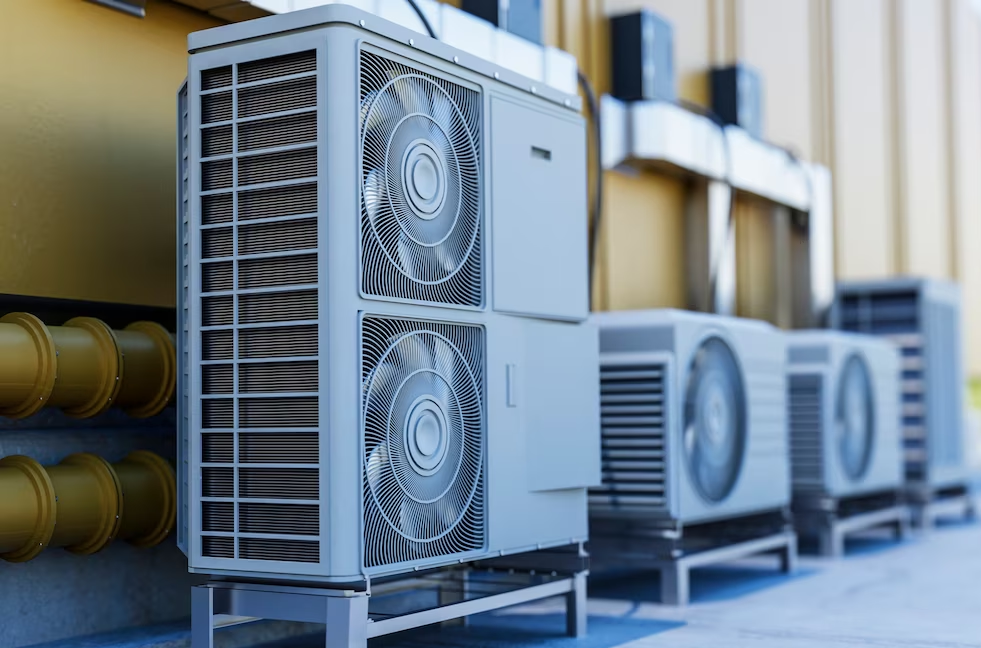The Importance of Proper Air Distribution in HVAC
Systems: Enhancing Comfort and Efficiency

When it comes to creating a comfortable and efficient indoor environment, a well-designed and properly functioning HVAC (Heating, Ventilation, and Air Conditioning) system plays a crucial role. While most people focus on selecting the right equipment and maintaining it regularly, the significance of proper air distribution within the system often goes unnoticed. In this blog post, Catalyst Industry explores the importance of proper air distribution in HVAC systems and how it enhances both comfort and efficiency.
Achieving Optimal Comfort Levels
One of the primary goals of any HVAC system is to maintain comfortable indoor conditions for occupants. Proper air distribution ensures that conditioned air is evenly delivered throughout space, preventing temperature inconsistencies and creating a pleasant environment. Eliminating hot and cold spots, occupants can enjoy consistent temperatures in every corner of the building, improving their overall comfort and well-being. In addition to temperature control, proper air distribution helps to regulate humidity levels. Balanced airflow reduces the chances of excessive moisture accumulation, preventing mould growth and maintaining a healthy indoor environment. Ensuring that each room receives an adequate supply of fresh air, the system effectively removes stale air, odours, and pollutants, improving indoor air quality and creating a healthier living or working environment.
Maximizing Energy Efficiency
Proper air distribution is vital for optimizing the energy efficiency of HVAC systems. When conditioned air is distributed evenly, the system operates more efficiently, reducing energy consumption. Here’s how proper air distribution enhances efficiency:
Reduced System Strain: Evenly distributing air, the system doesn’t have to work as hard to meet the desired temperature setpoints. This reduces strain on the HVAC equipment, extending its lifespan and reducing the need for frequent repairs or replacements.
Balancing Airflow: Proper air distribution ensures that each room receives an adequate supply of conditioned air. This eliminates the need for occupants to adjust thermostat settings or use additional heating or cooling devices, preventing energy wastage and maintaining optimal comfort levels.
Zoning Capabilities: Advanced HVAC systems offer zoning capabilities, allowing different areas or zones within a building to be controlled independently. Proper air distribution ensures that conditioned air is directed precisely to each zone, enabling customized temperature control and avoiding unnecessary heating or cooling of unoccupied spaces.
Airflow Management: Properly designed air distribution systems include features such as duct dampers, registers, and diffusers to control and direct airflow. Strategically managing airflow, it is possible to minimize pressure drops, optimize air velocity, and enhance the overall efficiency of the system.
Ensuring System Performance and Longevity
Proper air distribution not only benefits comfort & energy efficiency but also contributes to the overall performance and longevity of the HVAC system. When airflow is balanced and consistent, all components of the system, including the air handler, fan, filters & operate optimally. This reduces the risk of mechanical failures, improves system reliability, and extends the lifespan of the equipment. Regular maintenance and cleaning of the air distribution system are also essential for maintaining optimal performance. Filters, ducts, and vents should be inspected and cleaned or replaced as needed to ensure unrestricted airflow. Properly maintained air distribution components help to prevent the accumulation of dirt, dust, and debris that can hinder airflow & compromise system efficiency.
Improving Airflow Balance and Air Volume Control
Proper air distribution ensures that the airflow is balanced and evenly distributed throughout the building. This is achieved by strategically positioning supply vents, return grilles, and air registers in a way that optimizes air circulation. Balancing the airflow prevents excessive pressure differentials between rooms and allows for consistent air volume control. When the airflow is imbalanced, some areas may receive too much-conditioned air, while others may receive inadequate airflow. This can lead to discomfort, as well as energy inefficiencies. Imbalances in airflow may result from improperly designed or installed ductwork, blocked vents or registers, or even furniture or obstructions impeding airflow. Addressing and correcting any airflow imbalances, HVAC professionals can ensure that the conditioned air is distributed effectively, minimizing temperature variations as well as improving overall comfort. The air volume control also helps to optimize energy usage by allowing precise adjustments based on individual room requirements, occupancy levels, and outdoor climate conditions.
Enhancing System Control and Automation
Proper air distribution plays a crucial role in supporting advanced HVAC control and automation systems. With the integration of smart thermostats, sensors, and control algorithms, it becomes possible to precisely regulate the amount of conditioned air delivered to different zones or rooms based on specific temperatures. Intelligent HVAC systems utilize zoning capabilities to create independent climate zones within a building, allowing occupants to customize temperature settings based on their preferences. Proper air distribution ensures that each zone receives the appropriate amount of conditioned air, avoiding energy waste associated with overcooling or overheating unused spaces. Moreover, with the help of modern HVAC control systems, air distribution can be dynamically adjusted based on real-time data such as outdoor temperature, humidity levels, and occupancy patterns. This allows the system to respond adaptively, optimizing energy consumption and comfort levels throughout the day.
Optimizing Ventilation and Air Exchange Rates
Proper air distribution is integral to effective ventilation and air exchange within a building. Ventilation is essential for maintaining healthy indoor air quality by introducing fresh outdoor air and removing stale air & pollutants. Strategically placing intake vents and exhaust grilles, proper air distribution ensures that the ventilation system functions efficiently. It helps to prevent the recirculation of stale air, allows for the effective removal of pollutants, and ensures an adequate supply of fresh air to occupants. Well-designed air distribution systems take into account factors like room occupancy, activity levels, and pollutant sources to ensure the right amount of fresh air is supplied, contributing to a healthy & productive indoor environment.
Reducing Noise and Airflow Disruptions
Improper air distribution can lead to unwanted noise and airflow disruptions within the HVAC system. Noisy HVAC systems can be disruptive, affecting the comfort and productivity of occupants. Properly designed air distribution systems incorporate features such as acoustic insulation, sound baffles, and properly sized ductwork to minimize noise transmission. Ensuring smooth airflow and reducing pressure fluctuations, these measures help to create a quieter and more peaceful indoor environment. Additionally, disruptions in airflow, such as turbulence or excessive pressure drops, can result in energy losses and decreased system efficiency. Proper air distribution minimizes such disruptions by carefully designing the layout of ductwork, using appropriate air diffusers, dampers, and maintaining proper duct sealing. This optimizes system performance and reduces energy wastage.
Proper air distribution is an essential aspect of HVAC system design and operation. It significantly contributes to occupant comfort, indoor air quality, energy efficiency, and overall system performance. Investing in a well-designed air distribution system, regular maintenance, utilizing zoning capabilities, building owners can create a comfortable and energy-efficient environment while prolonging the life of their HVAC equipment.
